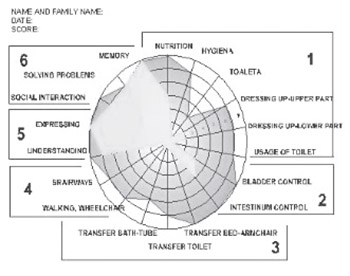Family participation in determination of FIM and Barthel indices
DOI:
https://doi.org/10.17305/bjbms.2006.3172Keywords:
FIM, Barthel index, family participationAbstract
Functional Independence Measure (FIM) is a basic indicator of severity of disability, and is used for measurement of functional independence. The aim of this paper is to present our initial experiences in the application of FIM. It needs to be noted that we have had an incomplete team in implementation of this project, and also that we have involved the patients and their families in the measurement of FIM. We selected a small sample of 23 patients, and measured their FIM and Barthel index both at the admission and discharge from the hospital. We do accept that this sample may be too small for the purposes of scientific verification. Therefore, we have included patients and their family members in the process of FIM measurement, along with the team members including a physiatrist, physiotherapist, nurse, and a help-nurse. Most of the subjects included in this project were patients with hemiplegia after a stroke (65.21 %), followed by quadriplegic patients (17.39 %), and patients with paraplegia (17.39 %). Gender structure shows 47.82 % male and 52.17 % female patients. The best progress (an increase in score from 4 to 53 points) in FIM was observed in patients with hemiplegia, and in Barthel index in patients with quadriplegia (an increase in score from 0 to 84). The differences are not statistically significant (p>0.05). The patients with hemiplegia were hospitalized in our clinic for the shortest period of time (around one month). Average rehabilitation time in our clinic for paraplegic patients was around 3 months, and for quadriplegic patients around 4 months (including early rehabilitation). We established that the patients who actively participated in FIM measurement had more control over their own medical assistance, and this participation had a supportive effect on patients. Their participation in FIM measurement needed constant encouragement. In order to make our claim that the FIM is a good supportive method as objective as possible, and in order to establish a correlation between disability and handicap, we intend to include a psychologist and apply Antonov SOC theory (coherency feeling) in our forthcoming research.
Downloads














